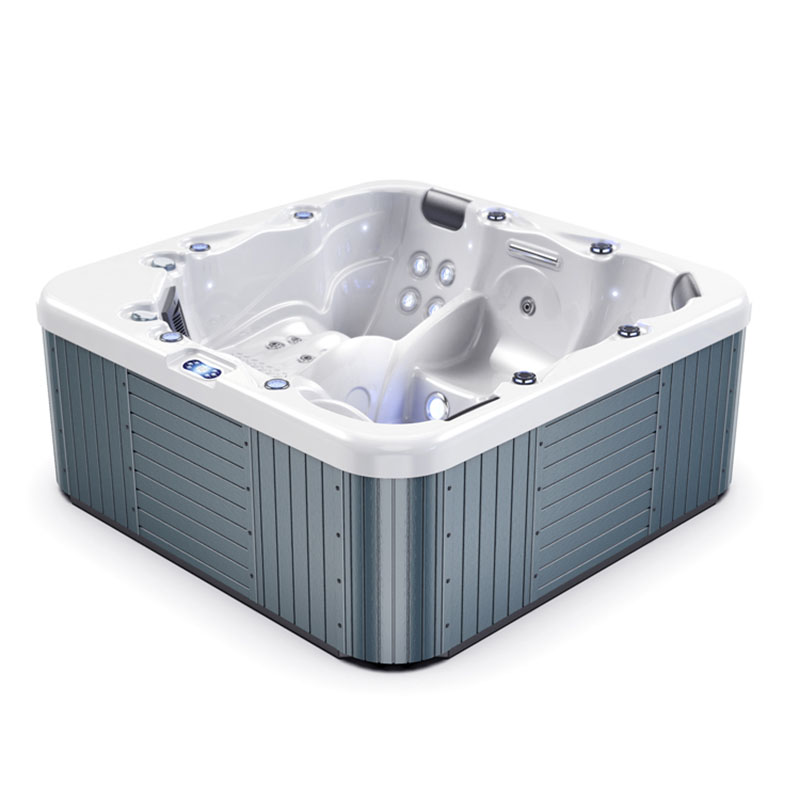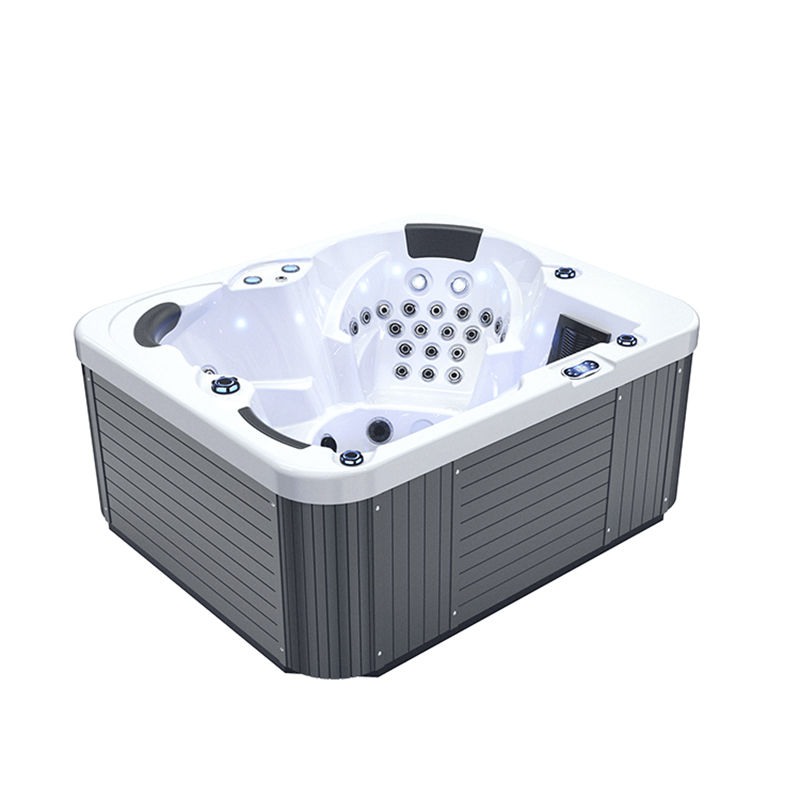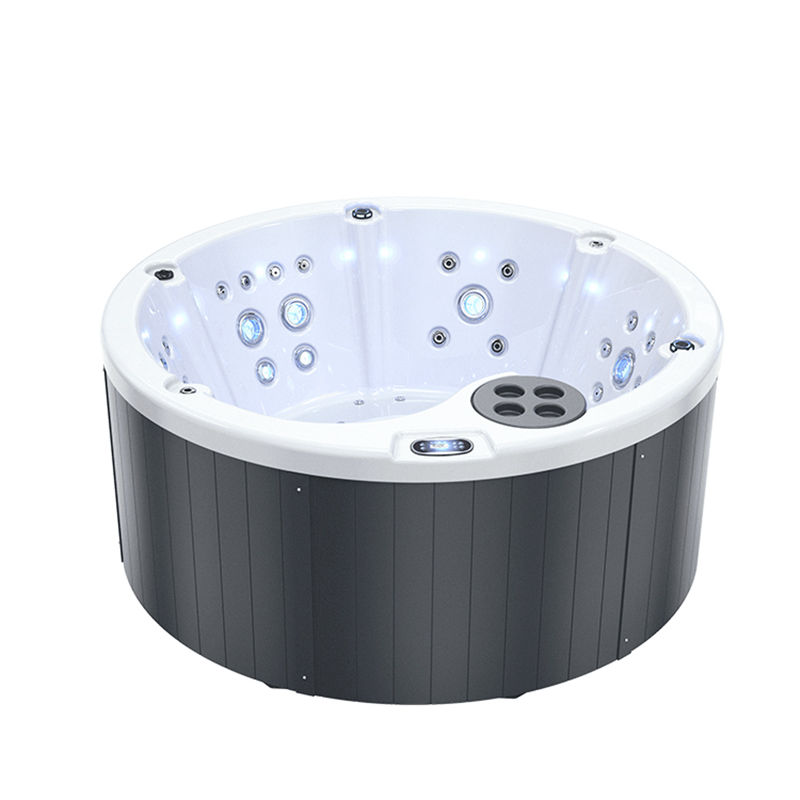For many users of swim spa hot tubs, maintaining clear and hygienic water is crucial for long-term use. However, a common question during routine maintenance is: "Do I need to shock the swim spa hot tub after each use?"
"Shocking" here refers to adding a certain amount of oxidant or chlorine to the water to break down organic pollutants, kill bacteria and algae, thereby restoring the water's cleanliness and clarity.
This article will systematically answer this question, providing scientific and reasonable maintenance guidance from the structural characteristics of the swim spa hot tub, the water circulation system, sources of contamination, to the principle and frequency of shocking.
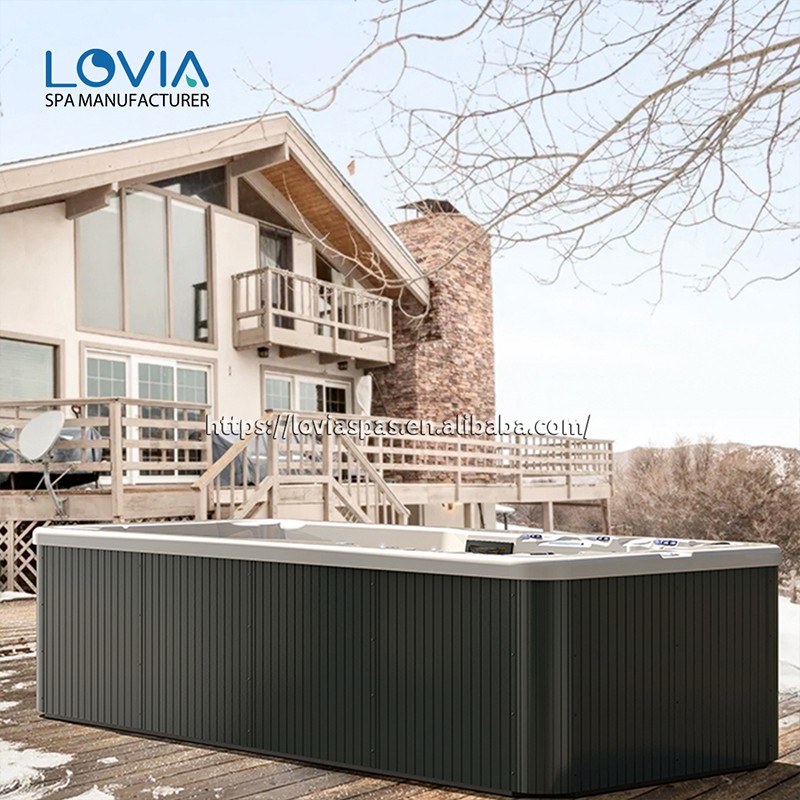
What is Shock Treatment? Why is it Important for Swim Spa Hot Tubs?
Shock treatment involves adding a high concentration of disinfectant (usually chlorine or a non-chlorine oxidant) to the bathwater to rapidly increase the water's oxidation capacity, thereby removing organic residues, sweat, grease, cosmetics, sunscreen, and bacteria from the swim spa hot tub.
Swim spa hot tubs have a larger water volume than household hot tubs, but their circulation systems are also more complex. Water is repeatedly drawn in, pressurized, jetted, and filtered. If water quality maintenance is inadequate, the following problems can easily occur:
• The water becomes cloudy and foamy;
• The filter and nozzles become clogged;
• Bacterial growth produces unpleasant odors;
• The lifespan of the circulation system is affected.
Therefore, regularly flushing the swim spa hot tub is a necessary step to maintain its performance and water quality safety.

What are the differences between a swim spa hot tub and a regular hot tub?
Why are the flushing frequencies different?
Although both swim spa hot tubs and hot tubs appear to be "spa equipment," they differ significantly in usage and structure, resulting in different flushing frequencies.
1. Larger Volume, More Complex Circulation
Swim spa hot tubs typically have a volume between 4,000 and 10,000 liters, while regular hot tubs generally do not exceed 1,500 liters.
Larger water volume means a wider distribution of bacteria and organic matter, slower chemical reactions, and the impact of flushing isn't as immediate as in a small hot tub.
2. Longer usage time and more users
Swim spa hot tubs are used not only for relaxation and massage but also for daily fitness and swimming training. Prolonged use leads to more contaminants, such as sweat and skincare product residue.
Therefore, even if flushing isn't always necessary after each use, periodic deep disinfection is essential.
3. Constant temperature environment promotes bacterial growth
Swim spa hot tubs are typically maintained at a constant temperature between 30°C and 38°C, providing suitable conditions for bacterial and algae growth.
In contrast, regular hot tubs are used for shorter periods and the water is changed more frequently, resulting in slower contamination accumulation.
This means that swim spa hot tubs typically require more frequent flushing to ensure consistently clean and stable water quality.
What contaminants affect the water quality of a swim spa hot tub?
Many users mistakenly believe that simply adding a filtration system and ozone sterilization device will automatically keep the water in a swim spa hot tub clean. In reality, even the most advanced equipment cannot withstand the cumulative contamination from daily use.
Here are common sources of contamination for swim spa hot tubs:
• Human secretions: including sweat, sebum, urea, saliva, etc.
• Personal care products: such as ingredients in sunscreen, shower gel, conditioner, perfume, etc.
• Dust and pollen in the air: especially outdoor swim spa hot tubs, which are more susceptible to external particulate contamination.
• Temperature and humidity: bacteria and algae multiply faster in water at higher temperatures.
• Residue from the water circulation system itself: if the filter pipes are not cleaned regularly, they can also become a source of contamination.
These contaminants gradually deplete the disinfectant in the water, rendering it ineffective, thus creating an opportunity for bacteria and algae to thrive.
This is precisely why regular "flush treatment" is so necessary.
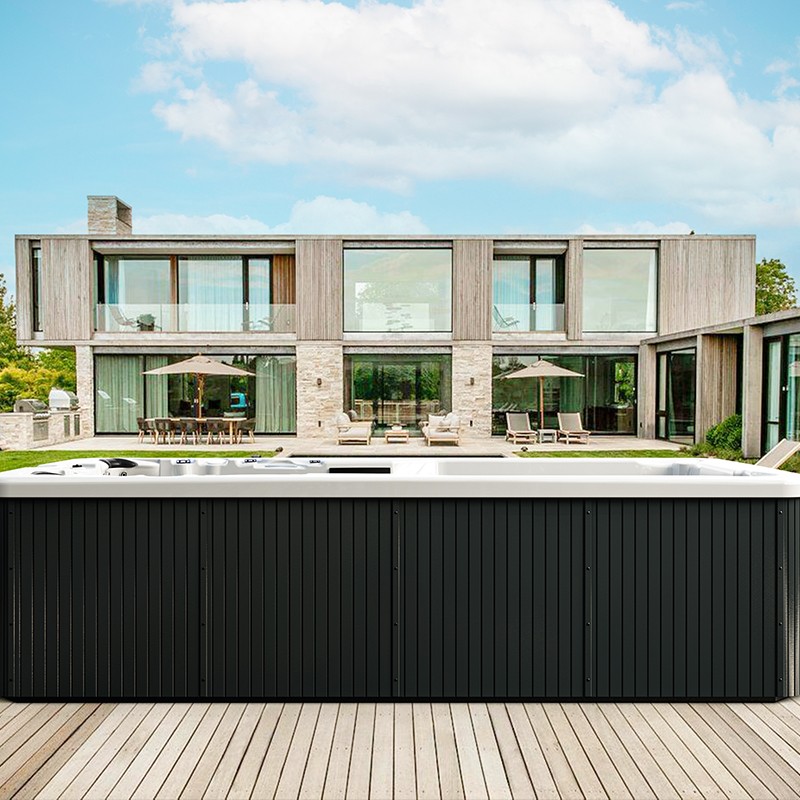
Does a flush treatment need to be performed after every use of the swim spa hot tub?
The answer to this question isn't an absolute "yes" or "no," but rather depends on usage frequency, water quality, and filtration system efficiency.
✅ A flushing treatment is recommended after each use in the following situations:
• When multiple people use the swim spa hot tub simultaneously;
• Usage time exceeds 1 hour;
• The water has a slight odor or is cloudy;
• The flow rate from the spa nozzles has significantly decreased;
• The last flush was performed more than 7 days ago.
In these cases, flushing quickly restores water balance, preventing bacterial growth and overburdening the filtration system.
⚠️ The flushing cycle can be extended in the following situations:
• Shorter usage times and fewer people;
• The equipment has an ozone or UV disinfection system;
• Daily disinfectant concentrations are maintained within a stable range;
• Water quality tests are normal, with no odor or foam.
General Recommendation:
Flush the swim spa hot tub after every 3 to 5 uses, or at least once a week.
This achieves a good balance between maintaining water quality and maintenance costs.
How to Properly Perform Shock Treatment on a Swim Spa Hot Tub?
Shock treatment is not about randomly adding chemicals; it's a step-by-step, scientific process. Improper operation can not only be ineffective but also damage the equipment. Here are the standard procedures:
1. Test Water Quality
Use a water quality test strip or instrument to measure the pH value (should be 7.2~7.8) and residual chlorine concentration of the swim spa hot tub. If the pH value is too high or too low, it will affect the effectiveness of the shock treatment.
2. Choose the Appropriate Shock Agent
• Chlorine Shock: Strong oxidizing power, suitable for deep cleaning;
• Non-Chlorine Shock: Gentle oxidation, leaves no chlorine smell, suitable for frequent users.
3. Stop the Heating and Filtration Systems
Before adding the shock agent, turn off the circulation system for about 15 minutes to ensure the agent is evenly distributed in the water.
4. Evenly Dispense the Chemical
Calculate the dosage according to the packaging instructions (usually 15-20 grams of shock powder per 1000 liters of water) and evenly dispense it into the water of the swim spa hot tub.
5. Start the Filtration System
Restart the filtration system and allow the chemical to circulate fully in the water for 6-8 hours to thoroughly decompose organic residues.
6. Check Water Quality and Rebalance
Measure the pH and residual chlorine concentration again the next day. If they are higher than the standard, open the lid to allow the chlorine to evaporate naturally. The water can be reused only after the water quality has stabilized.

What are the effects on the swim spa hot tub if shock treatment is not performed?
The consequences of ignoring shock treatment are often not immediately apparent, but over time they can lead to decreased equipment performance and even damage.
• Turbid water and foaming: Increased organic pollutants lead to decreased filtration efficiency.
• Nozzle clogging and reduced water pressure: Bacteria and algae proliferate in the pipes, forming a "biofilm" that affects water flow.
• Odor and Skin Irritation: Unoxidized contaminants combine with chlorine to form chloramines, producing an irritating odor.
• Reduced Equipment Lifespan: Residual impurities corrode the heater and pipe inner walls.
Therefore, regular flushing is not only for water clarity but also for protecting the long-term stable operation of the entire swim spa hot tub system.
Will excessive flushing frequency damage the swim spa hot tub?
Any maintenance method has its limits. Excessive flushing may cause the following problems:
• Fading or fogging of acrylic surfaces;
• Aging of sealing strips;
• Oxidation of metal parts.
Therefore, it is recommended to strictly follow the instruction manual and flush no more than twice a week. If the usage frequency is extremely high, a low-concentration, non-chlorine oxidant can be chosen to reduce the risk of damage.
How to reduce flushing frequency through daily habits?
Proper use and cleaning habits can significantly extend the flushing cycle and reduce maintenance burden:
• Rinse your body before use to reduce the amount of oil and cosmetics entering the water;
• Replace the dust cover promptly after use to prevent dust from entering;
• Clean the filter cartridge regularly to maintain smooth circulation;
• Test water quality weekly to ensure stable disinfectant concentration;
• Keep the area around the bathtub clean and tidy.
Good maintenance habits will ensure longer-lasting water quality in the swim spa hot tub, more efficient system operation, and reduced reliance on chemical agents.
Do I need to flush the swim spa hot tub every time?
Returning to the initial question—"Should I flush the swim spa hot tub after each use?"
The answer is: Not every time, but regular flushing is necessary.
You need to adjust the frequency based on usage, water quality changes, and filtration system performance.
If you want to maintain ideal water quality and a comfortable user experience with your swim spa hot tub, here are the most practical conclusions:
• Light use (1-2 times per week): Jerk once a week;
• Moderate use (3-5 times per week): Jerk after every 3 uses;
• High-frequency use (daily or with multiple users): Jerk gently after each use.
Scientific jerking frequency + correct operation method = a healthy and safe spa experience.
This is the core principle for maintaining your swim spa hot tub.
What is included in LOVIA SPA’s standard spa configuration?
All standard models from LOVIA SPA come equipped with premium Aristech acrylic, Balboa control systems, and LX water pumps. Depending on your order, we also provide lighting systems, jets, valves, pillows, and filters — each covered by our 2–5 year warranty. Our Factory configuration balances performance and value, making it ideal for both residential and commercial use.
Buyers can request customized Quotes to add extra features or design elements. We supply Wholesale Prices, Promotions, and reliable after-sales service to support your Purchasing plan.


